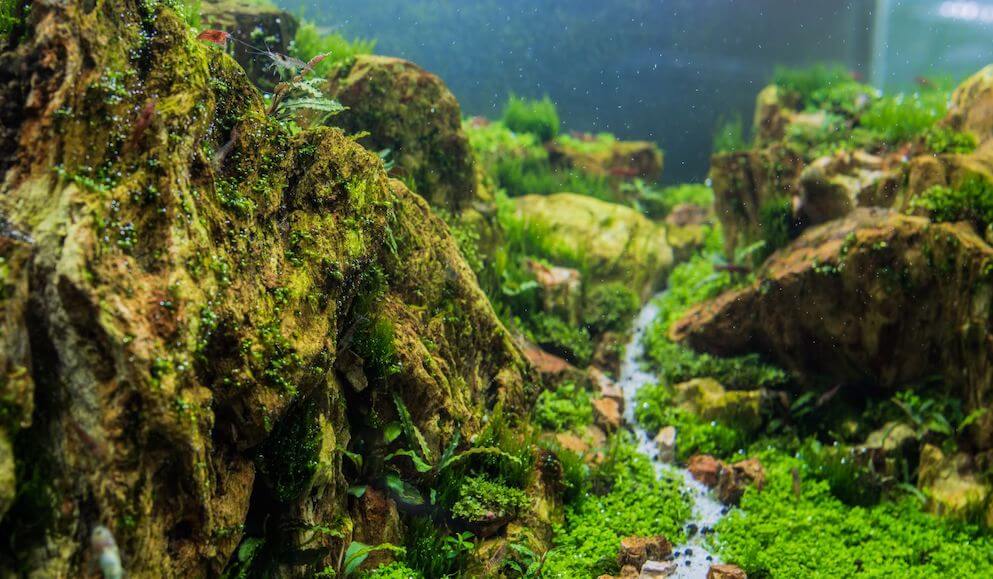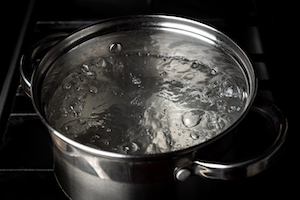
Aquariums decorations always have a great look because of the beauty and color that the decoration adds to the tank. The aquarium usually looks good for weeks or even months until you start noticing some brown or green algae growing on your aquarium screen. That great look that the tank had weeks earlier is no longer there, which only means cleaning the aquarium to bring back that extraordinary look.
The fish tanks need regular cleaning to ensure that your fish and other aquarium inhabitants have a healthy place to stay. When it comes to cleaning the aquarium, it is more than just using aesthetics. Adding chemicals to your tank in the name of cleaning will make your fish ill or even kill them in the long run. To avoid bacteria from inhabiting your tanks, you should ensure that you regularly clean your fish tank to maintain good health and maintain good water quality.
How to Remove Algae from The Aquarium Decoration?
Every aquarium owner faces algae, and at one point, they end up cleaning the tank. The cleaning process is never that hard, especially when it comes to dealing with algae.
The first thing to do is to start by removing the decoration from your aquarium. When cleaning the aquarium decoration, you should not remove all the decoration all at once. It is fair that you remove 25% – 50% of the ornament when cleaning the tank. That is because removing the decoration at once will upset the shy fish and can cause an imbalance in the aquarium environment.
Some decorations are home to good bacteria, which always ensures a healthy environment for the fish. So, when cleaning the aquarium, it is advised to clean when the fish are still inside the tank. Some fish owners even have two sets of fish decorations that they always keep clean and safe from insects and harmful chemicals.
So, when cleaning one set of decorations, they install the new collection, saving time. After a few times of removing and replacing the decorations, your fish will eventually get comfortable even though the fish will always look uncomfortable the first time you change the decoration.
Here are some few methods you can use to remove algae from your aquarium
1) Boiled Water

Boil a fair amount of water and make sure that it can hold all the decorations all at once. Soak all the decorations in a tab of hot water for 15 – 20 minutes, and you should make sure they are well submerged. If you have plastic plants, you should avoid soaking them in hot water as they tend to melt and will no longer be useful again.
Once you are done soaking for 15 minutes, you can rinse the decorations with tap water, as most algae will have absorbed and easy to remove. You should not use soap or any chemicals while rinsing. Use a scrub or an aquarium sponge to brush off the algae from the decorations gently. The brush or scrub should be inserted gently into the cracks and crevices to ensure you get rid of all the algae hiding in those corners. Once you finish the step and you see that your decorations are clean and algae free, you should go ahead and insert them back to the aquarium.
2) Cleaning with Bleach Solution
Some algae tend to be very stubborn, and they do not get off quickly by just scrubbing. So, this method is the way to go. To clean decorations with bleach, you should ensure that the bleach is 5%, and 95% is water. The bleach should not have any additives, and it should be sodium hypochlorite as the only ingredient, and the water should not be hot; it should just be warm as hot water tends to deactivate the bleach.
Start by soaking the bleach water’s decorations for 10 to 15 minutes until you see the algae peeling off. The length of time should always be determined by how dirty your decorations are. But it will help if you never soak them for more than an hour as that will end up de-coloring the decoration. Once you realize that the algae have entirely come off, you should go ahead and rinse with cold water as you keep brushing the little particles that are hiding in the cracks.
Make sure while cleaning with the brush, you should check all sides of the decoration to be sure no algae are hiding in the crevices. Once you finish rinsing the first time, you should soak them again in warm water and leave them overnight to be sure that all the bleach comes off the decoration.
Once you finish rinsing the second time with water, you should soak the decorations in dechlorinating tablet water to make sure you get rid of all the chlorine that may affect the driftwood decorations and tend to be porous. That is why it is essential to soak all the decorations three times in dechlorinated water as the chlorine and the bleach can be harmful to the fish.
Caution:
- Bleach can cause discoloration and can also be corrosive to the decorations.
- Some bleaches are very irritating to the hands, and it is advisable to wear gloves when dealing with bleaches. They can cause skin irritation.
- Always use a face mask as the fumes from the bleaches tend to be dangerous.
3) Use Vinegar Solution
Vinegar is another right way to clean your decorations. It is a mixture of both fermentation and oxidation of sugary liquids and alcohol. Vinegar typically comes from wine beer or cider. Vinegar is good when it comes to removing mineral deposits from decorations and algae from plant decorations. Start by preparing a vinegar solution with 120ml of vinegar mixed with half a gallon of distilled warm water. Make sure the decoration is in the solution for 5 – 10 minutes. After doing that, scrub the decorations using a scrub and make sure you clean all the cracks to be sure no algae are hiding. After that, you should rinse the decorations with warm water, and if they are thoroughly clean, place them back to the aquarium.
Things Not to Do:
- It is advisable not to use soap or any other detergents while cleaning the fish tank. The detergents are usually harmful to the fish, and at times the soap or detergent can contaminate the aquarium water. Never use detergents to clean the aquarium, not unless it is labeled suitable for cleaning fish tanks.
- It would be best if you never clean your aquarium regularly unless it is filthy and needs cleaning. That is because cleaning the fish tank now and then will destroy beneficial bacteria that are good for the aquarium’s survival. When it comes to the fish tank, it should never be spotlessly clean.
- Clean one decoration at a time, as cleaning all of them at once will cause stress to the fish.
Summary
As you have seen in the steps mentioned above, cleaning an aquarium should never be that hard. Just follow one of the outlined steps, and your aquarium will be looking useful and attractive once more. Even though most people love to have a spotless aquarium, you should always put in mind that there are good bacteria that are beneficial to the health of the aquatic life in your fish tank. However, having too many bacteria can lead to your tank having less oxygen, which is dangerous. Just make sure your tank is clean but also not too clean.



